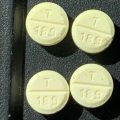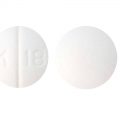Phenibut is an anti-anxiety medication similar to a brain chemical called gamma-aminobutyric acid (GABA). Since the 1960s, it has been used and prescribed in Russia and many other countries to treat insomnia, depression, stuttering, vestibular disorders, irregular heartbeat, and post-traumatic stress disorder, according to BMJ Case Reports. Phenibut is a GABA-B agonist and goes by the name B-phenyl-y-aminobutyric acid or phenyl-GABA. It is a synthetic form of GABA, or gamma-aminobutyric acid, one of the brain’s inhibitory neurotransmitters.
GABA has the effect of inducing a relaxed, calm feeling. A person will feel reduced anxiety and nervousness in social situations, for example, and may have more control over feelings and thoughts. By regulating overactive neural processing, it can help people who tend to over-think and who are overly self-conscious. Phenibut may also reduce negativity and has sedative effects.
How it works
Phenibut is a psychotropic drug, which means it affects the user’s mental state. The drug is similar in structure to a type of neurotransmitter known as neurotransmitter γ-aminobutyric acid (GABA), which plays a role in reducing excitability and anxiety, as well as enhancing euphoria and cognitive function. Phenibut binds to a specific subtype of the GABA receptor, activating a similar reaction as GABA.
Animal studies have shown that Phenibut is able to penetrate the blood-brain barrier. The blood-brain barrier is an important mechanism that stops harmful toxins and bugs travelling through the bloodstream and entering the brain. Once phenibut reaches the brain, the result is reduced anxiety and social inhibition. Because it depresses the central nervous system (like GABA), it is also used as a mood elevator and tranquilizer. Phenibut is structurally similar to the widely prescribed drug baclofen (Lioresal), which is available in Australia. Baclofen is prescribed as a muscle relaxant for patients with conditions such as multiple sclerosis.
Side Effects of Phenibut
Phenibut is possibly unsafe for most people when taken by mouth. Phenibut can cause many side effects, including a hangover effect, dizziness, nausea, poor balance, fatigue, and feelings of electric shocks in the arms and legs. Phenibut in large doses can cause trouble breathing and unconsciousness.
Phenibut can cause dependence when taken regularly. People who use Phenibut regularly and then stop taking it may experience withdrawal symptoms. These symptoms can include decreased appetite, nausea, muscle aches, anxiety, agitation, trouble sleeping, and seizures.
Special Precautions & Warnings: Pregnancy and breast-feeding: Not enough is known about the use of Phenibut during pregnancy and breastfeeding. Stay on the safe side and avoid use.
How Long Does Phenibut Last
In the blood, Phenibut has a half-life of about 5.3 hours but its impacts can last an entire day. The effect on the brain’s GABA receptors continues after all of the drugs have been secreted. Bodybuilders have used it too, claiming muscle-building properties that haven’t yet been proven. A medical sports science study suggested GABA ingestion may increase human growth hormone levels and muscle response to intense exercise.
Can Phenibut Get You High?
In addition to killing anxiety, Phenibut has many other properties. People use it to increase their attention and concentration. Phenibut is often used recreationally to calm nerves in social situations. It induces calm feelings and focuses without the upper effects of caffeine or the depressive effects of alcohol. As with any drug, legitimate use of [henibut can lead to abuse. The absence of a standard dosage complicates things as well; the optimal dosage amount varies based on the individual, personality, and chemical makeup.
Signs of overdose include shallow irregular breathing; drowsiness and lethargy; increased sweating; decreasing blood pressure; nausea and vomiting; and lowering body temperature. Phenibut withdrawal may mimic benzodiazepine withdrawal with symptoms including anxiety, insomnia, and tension. Baclofen has been an attractive medication for Phenibut withdrawal given its similar molecular structure and mechanism of action. However, Chronic Phenibut use at high doses may require a slow recovery period of up to six months; some case studies have demonstrated prolonged treatment with baclofen for phenibut withdrawal. SEE: How to Spot Fake Percocet
Overcoming Addiction to Phenibut
Years of research have shown that substance use disorders are brain disorders that can be treated effectively. Treatment must take into account the type of drug used and the needs of the individual. Successful treatment may need to incorporate several components, including detoxification, counseling, and medications, when available. Multiple courses of treatment may be needed for the patient to make a full recovery.
The two main categories of drug use disorder treatment are behavioral treatments (such as contingency management and cognitive-behavioral therapy) and medications. Behavioral treatments help patients stop drug use by changing unhealthy patterns of thinking and behavior; teaching strategies to manage cravings and avoid cues and situations that could lead to relapse; or, in some cases, providing incentives for abstinence. Behavioral treatments, which may take the form of individual, family, or group counseling, also can help patients improve their personal relationships and their ability to function at work and in the community.
Addiction to prescription opioids can additionally be treated with medications. These drugs can prevent other opioids from affecting the brain or relieve withdrawal symptoms and cravings, helping the patient avoid relapse.
Here are some things to keep in mind and some actions to take when helping someone overcome Phenibut addiction.
1 – Be realistic: Expect that there will be roadblocks, resistance, and possibly relapse. But also expect that rehabilitation and recovery are possible with the right steps forward.
2 – Remember that they are still the person you know and care about even through the challenges
3 – Accept that you can’t fix them or help them all by yourself. Don’t make the mistake of thinking you can fix your loved one’s addiction or be their only source of support. Their best chances for progress are with well-rounded support, including clinical care and a network of peers who are also journeying in recovery.
4 – Don’t wait to take supportive actions: Denial can happen for the addict and for the family and friends involved too. It can be a lot easier to put off actions and conversations, but that means missed opportunities for early healing and greater risks of physical, psychological, emotional, and life damage. The diverse effects of Phenibut addiction can be devastating.
5 – Consult with a professional interventionist. Don’t underestimate the value of professional advice and intervention because your loved one’s health and safety are too important. Find the best professional help to guide you through this early stage, toward successful rehab, and toward long-term progress in recovery.
6 – Avoid enabling behavior: Be honest about your own feelings, needs, and boundaries. And be honest about what you expect from and hope for your loved one. Enabling involves sheltering the addicted individual from the consequences of their Phenibut abuse
7 – Draw a line at their unacceptable behaviors and compromises you are unwilling to make. Cutting someone slack is not doing them any favors when they are needing to turn their bad habits around.
8 – Keep an eye on your own behaviors and attachments that might reflect codependence. Relationships become very complicated in the context of drug addiction, and codependency is a common and confusing factor.
9 – Don’t let their care and well-being come before your own: Perhaps it has been a long time since you put your own well-being first due to your concern for a loved one wrapped up in drug addiction. But not only is it a mistake to forfeit your own well-being, but it is unfortunate to miss out on the many opportunities for the help and support that are available. also read: Types of Blue Xanax Bars and Pills






